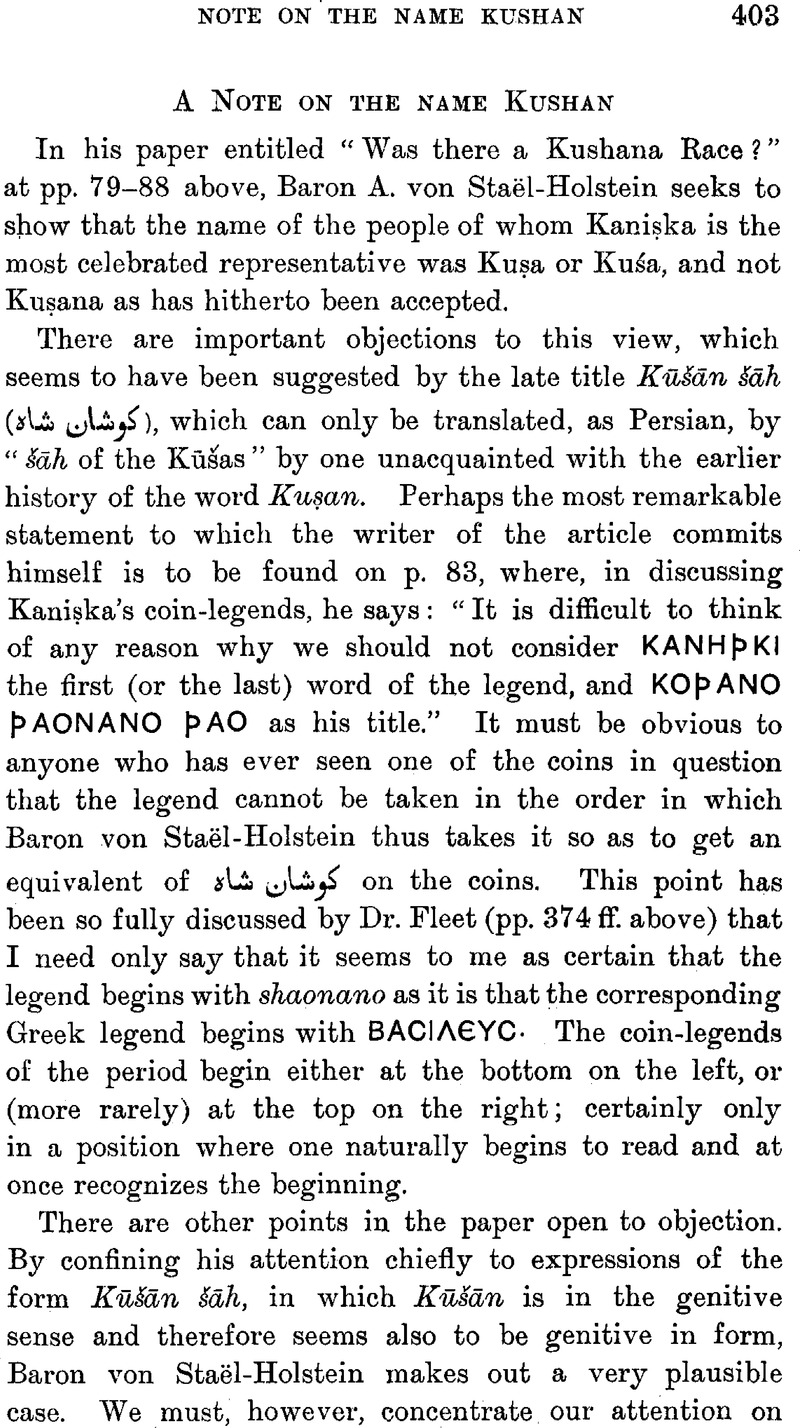Article contents
Abstract

- Type
- Miscellaneous Communications
- Information
- Copyright
- Copyright © The Royal Asiatic Society 1914
References
page 404 note 1 It must be remembered that we do not actually know that wang corresponds to šāh.
page 404 note 2 We may here note that Chavannes, , T'oung Pao, 1907, p. 191Google Scholar, translates the passage “he elected himself king; the name of his kingdom was Kuei-shuang”, and not “he used the dynastic title king of the Kuei-shuang”. It certainly can be translated “he used the dynastic title king of Kuei-shuang” as de Groot does. It is impossible to tell from the Chinese whether the name is of a people or their country.
page 404 note 3 Centralasiastische Studien I, in Sitz. Ber. d. Wien. Akad., 1887, vol. 87, pp. 155–156Google Scholar; it is accepted by Marquart, , Ērānšahr, p. 36Google Scholar, note 5.
page 405 note 1 Gardner, , p. 206Google Scholar, No. 29 ff.
page 405 note 2 Cf. Justi, , Iranisches NamenbuchGoogle Scholar, s. v.
page 405 note 3 Cf. Latyschew, B., Inscriptions Orae Septentrionalis Ponti Euxeni, 1885Google Scholar, etc.; Indices.
page 405 note 4 Kuei-shuang-wang is, equally, “king of Kuei-shuang” and “king of the Kuei-shuang”.
page 405 note 5 Marquait, , op. cit., p. 208.Google Scholar
page 406 note 1 Some at least originally genitive plurals; e.g., Gīlān, of. Gelœ, Γ![]() λαι; but this was soon lost sight of; and it must be remembered that, when an Arab geographer talks of the
λαι; but this was soon lost sight of; and it must be remembered that, when an Arab geographer talks of the ![]() he means “king of Gīlān” and not “king of the Gēls”.
he means “king of Gīlān” and not “king of the Gēls”.
page 406 note 2 Ed. Goeje, de, p. 17.Google Scholar
page 406 note 3 Ed. Wüstenfeld, , iv, p. 320, 1. 15.Google Scholar
page 407 note 1 СΥ is supposed to be genitive of a form sa, but the form ![]() , with ă, for
, with ă, for ![]() , is of quite modern origin.
, is of quite modern origin.
page 408 note 1 For Ζ = y, cf. ΚΟΖΟΛΑ = Kuyula, ΑΖΟΥ = Ayasa; = j, ΚΟΖΟΥΛΟ = Kujula; ΖΕΙΟΝΙЅΟΥ = Jihuniasa, and for ΟΟ = w, cf. ΟΟΗΜΑ = Wima.
page 409 note 1 A few have the form ΟΥΟΗΡΚΙ; ΟΟΗΡΚΕ is also found.
page 410 note 1 N.C., 1893, pl. xv, figs. 1, 2; p. 199.
page 411 note 1 Whitehead, , Cat. Coins in Punjab Museum, i, p. 156Google Scholar, n. 2.
- 1
- Cited by




